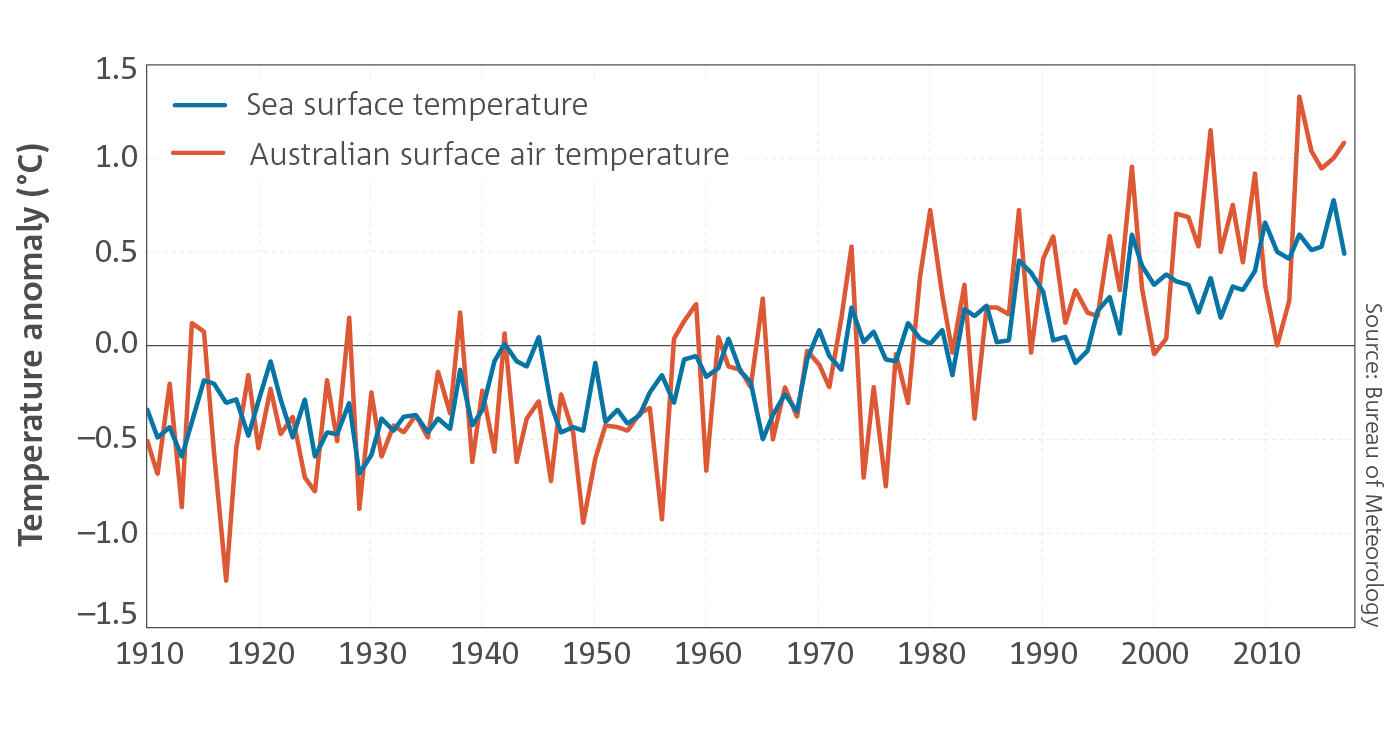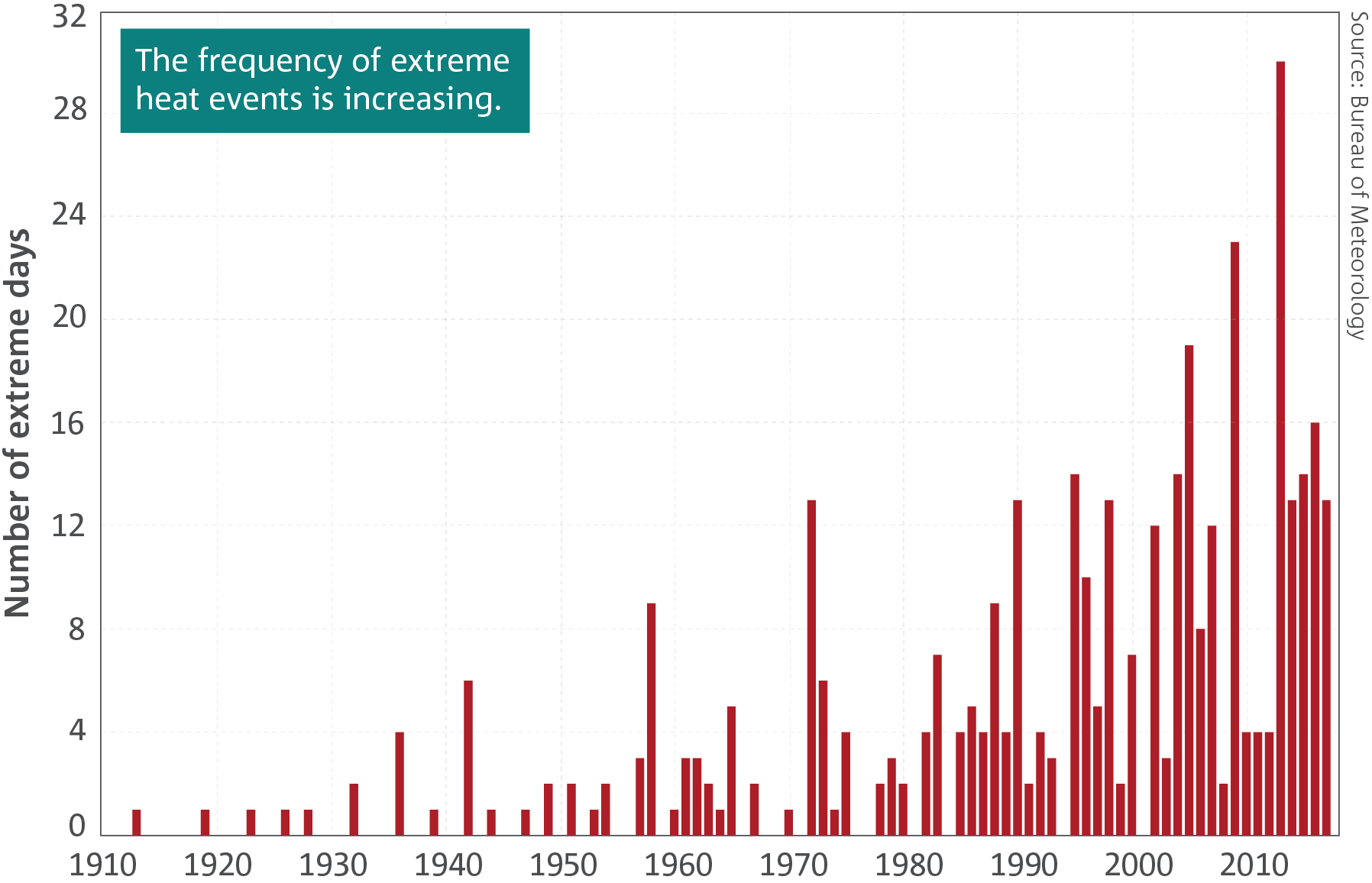BoM/CSIRO issue statement on Australia's changing climate

Australia's climate has warmed by just over 1°C in the last 108 years and this warming is making bushfires, heatwaves and droughts worse, according to the latest Australian State of the Climate report, issued this week.
The Bureau of Meteorology and CSIRO jointly release a State of the Climate report every two years, outlining how Australia's climate is changing, what impacts these changes are having and where our climate may be heading in the future.

This week's report shows that Australia's climate is just over 1°C warmer today than it was in 1910, while the nearby oceans have also warmed by about 1°C during this time.

Image: Australia's air and sea surface temperature anomalies between 1910 and 2017. Source: BoM/CSIRO
According to the report, Australia's changing climate has helped cause a higher frequency of extreme daily heat events. Put another way, Australia's area average daily mean temperature is more frequently ranking in the top one per cent of historical records than it was in the past.

Image: Number of days per year that ranked in the top 1% of histoircal records between 1910 and 2017, based on daily national area-averaged mean temperature at that time of year. Source: BoM/CSIRO
Other observed changes that have occurred alongside Australia's warming climate include:
- An overall increase in the intensity of fire weather across much of the country and a lengthening of the fire season during the last 40 years
- A shift towards drier weather in southwestern and southeastern Australia during the southern wet season (April and October) and a trend towards wetter weather in northern Australia throughout the year
- Heavy rainfall appears to be getting more intense, as a warmer atmosphere can hold more water
- A reduction in the overall number of tropical cyclones in the Australian region
- A decline in Australia's natural snow depth and spatial snow coverage since the middle of last century
- Increased frequency and extent of coral bleaching events on the Great Barrier Reef in recent decades
It's worth pointing out that climate trends refer to a background change on a long timescale, and year-to-year variability in the weather can mask these climate change trends. For example, wet years still happen in areas that are experiencing a drying climate and good individual snow years still happen in the alps.
Australia's report is one in a number of State of the Climate reports released by other countries and organisations around the world on a regular basis. Some of these include the World Meteorological Organisation (WMO), America's National Oceanic and Atmospheric Administration (NOAA) and the European Centre for Medium-Range Weather Forecasts (ECMWF).
These statements all paint a similar picture of warming around the globe. According to the WMO's latest State of the Climate report, global mean temperatures in 2017 were about 1.1°C warmer than pre-industrial temperatures.
The Bureau's report also includes a clear statement about the cause of rising temperatures globally and in Australia. According to the BoM, "Now, mostly because of the burning of fossil fuels and changes in land use, the concentrations of greenhouse gases in the atmosphere are rising and causing surface temperatures to increase, leading to an 'enhanced' greenhouse effect."
You can read the full Australian State of the Climate Report here: http://www.bom.gov.au/state-of-the-climate/State-of-the-Climate-2018.pdf